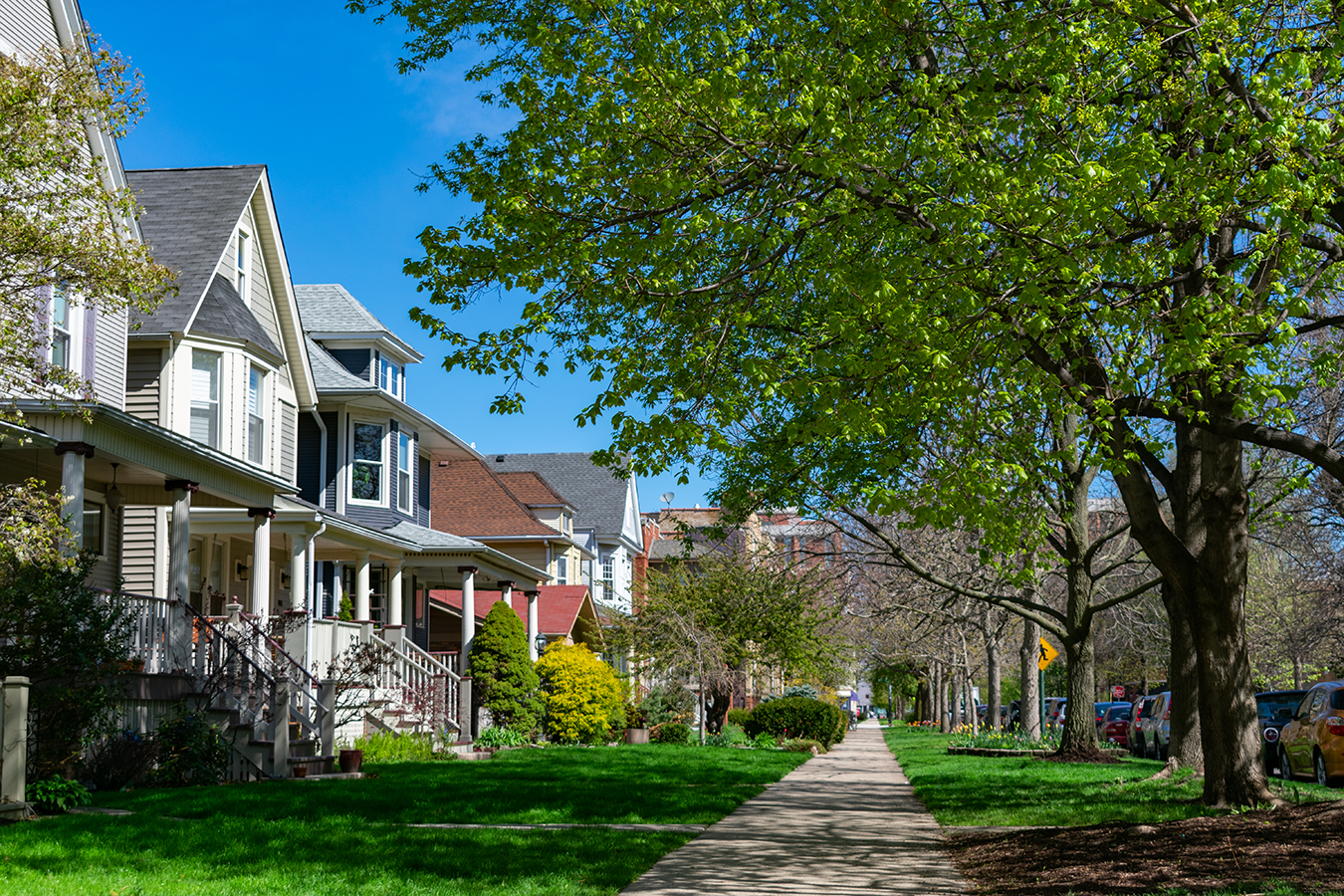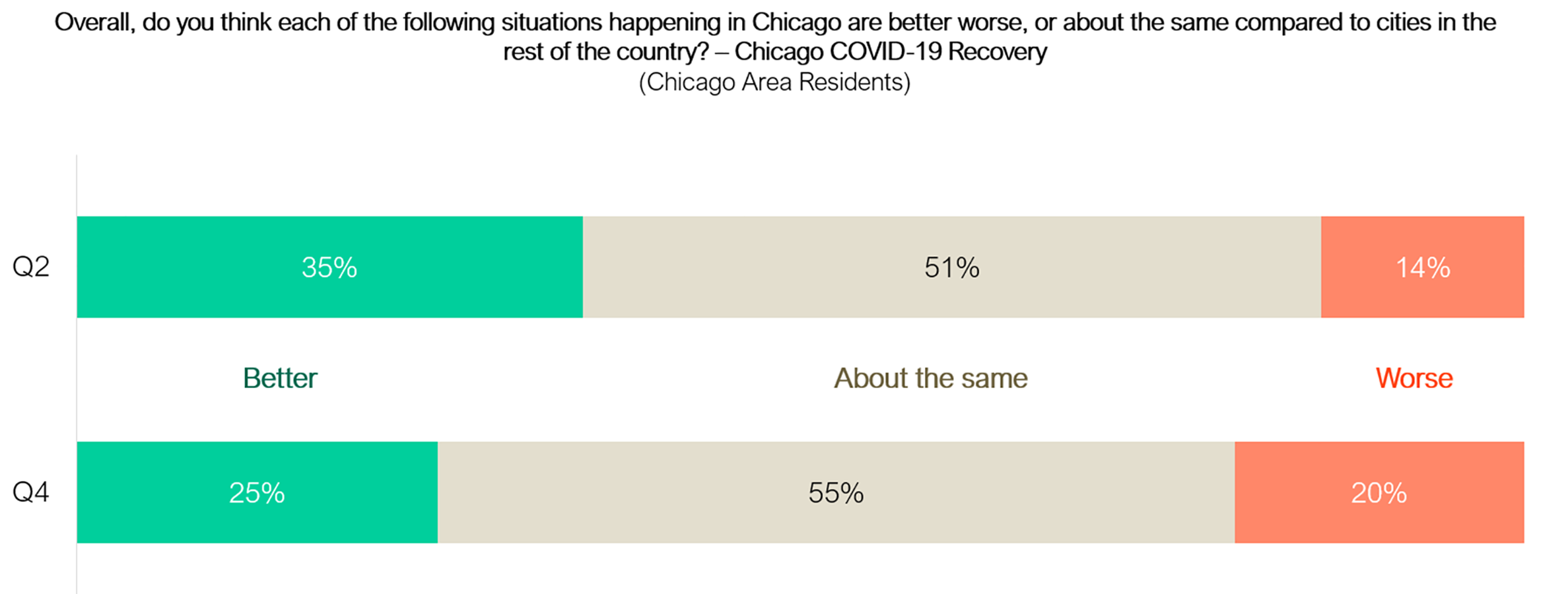
A survey of Chicago residents looks at perceptions of equality in economic well-being, health, access to services, and neighborhood investments.
What we found is a growing number of disparities, frequently affecting individuals with lower household income and household wealth levels as well as people of color. However, what is also clear is that residents believe these problems can be solved with targeted investment in resources access.
Key Findings:
- Currently, two-thirds of residents say that their household has money leftover after paying for essentials, but residents are evenly divided on their comfort with their household’s emergency savings.
- Chicago residents, especially lower- and middle-income residents, are saving more: 42 percent of those with incomes under $50,000 say they are actively contributing to some type of long-term savings–up 11 percent from Q2 2021.
- Just 25 percent of residents say that the pandemic recovery in Chicago is better than other U.S. cities, down from 35 percent in Q2 2021.

- Six in ten Chicagoans agree that residents of color have been more negatively affected than White residents by the COVID-19 pandemic.
- Sixty-two percent of Chicagoans of color report that their household financial situation has worsened due to the COVID-19 pandemic.
- Fifty-six percent of residents agree that programs encouraging Chicagoland residents to get vaccinated against COVID-19 should focus more on residents of color than on White residents.
- Wealth inequity has also cushioned the impact of the pandemic for many households: those with a household wealth under $25,000 sought emergency food at three times the rate of those with a household wealth of $100,000 or more.
- Sixty-eight percent of all Chicago area residents agree that the life expectancy of Black residents is shorter than that of non-Black residents, while 54 percent of all Chicago area residents agree that the life expectancy of Hispanic residents is shorter than that of non-Hispanic residents. Public safety and resource allocation are viewed as the most influential factors in life expectancy among Black and Hispanic residents.

Download the full Harris report on economic inequity ›



